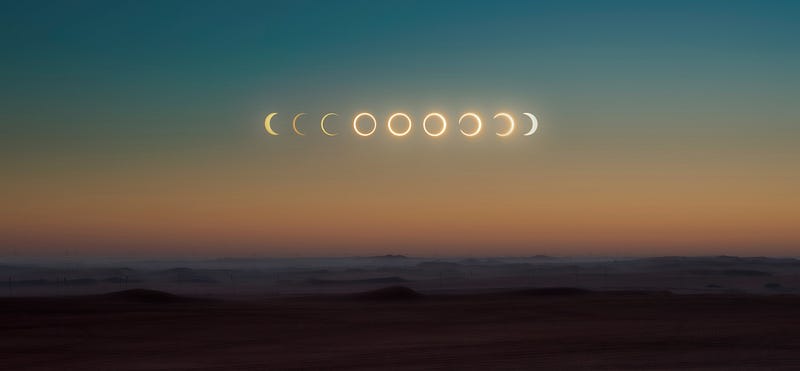The Power of Togetherness: Unraveling Collective Effervescence
Written on
The Eclipse Experience
Residing just outside Cleveland, Ohio, I found my hometown recognized as one of the prime locations to witness the 2024 total solar eclipse. Initially skeptical about the significance of this event, I can now affirm that being in the path of totality was indeed extraordinary.
Together with my three children and husband, we observed the eclipse from a local college football field. From our vantage point, I noticed our neighbors gathered in their driveways, older folks settled comfortably in lawn chairs, and college students sprawled on blankets across the quad, with a few adventurous ones even climbing atop the gymnasium roof.
As we neared totality, the temperature dropped noticeably, and an electric energy enveloped us. The crowd's murmurs grew, and many took out their phones to capture the moment.
Then, it happened. As we all sat together in the twilight, a night-like darkness fell upon us, and we erupted into howling. Neighbors, elders, children, and students cheered, shouted, and applauded. Just recalling it gives me goosebumps—an unforgettable moment of collective wonder that felt almost sacred.
If you think this excitement was limited to just the college crowd, many videos shared on social media reflect similar exuberance. And this is no surprise!
The joyous chorus we shared can be understood through the concept of Collective Effervescence, introduced by the French philosopher Émile Durkheim. He described it as a “synchronization and intensification of emotions among individuals participating in collective rituals.”
“(…) their first effect is to bring individuals together, to multiply the relations between them, and to make them more intimate with one another. By this very fact, the contents of their consciousnesses are changed.” — Émile Durkheim
While Durkheim primarily linked collective effervescence to religious rituals, recent studies have explored this phenomenon in various communal gatherings and everyday experiences. It’s a shared emotional journey, a feeling of interconnectedness, and a “sensation of sacredness” that many of us can relate to. Whether at protests, concerts, celebrations, or religious ceremonies, you’ve likely felt that goosebump-inducing magic of collective effervescence.
Benefits of Collective Joy
These shared experiences not only bring happiness but also foster well-being. Moments of collective effervescence help us transcend individual differences, shifting our focus from self-centeredness to a collective spirit, thereby nurturing community bonds. This is crucial, as research indicates that pursuing personal happiness can lead to feelings of isolation, whereas engaging in acts of kindness—both giving and receiving—enhances our well-being. We are inherently social beings; our connections strengthen this innate wiring.
The positive effects of these experiences extend well beyond the event itself and can deepen with repetition. Although witnessing totality may be a once-in-a-lifetime occurrence, there are countless opportunities to come together to celebrate joy, peace, and euphoria—something we often overlooked during the challenging times of the COVID-19 pandemic.
So, participate in marches or rallies. Buy tickets for concerts (or even the film of a concert!). Join a pickup game. Sing in a choir. Gather friends for a dance party.
As Adam Grant noted in his New York Times article, “joy shared is joy sustained.” In a world rife with violence, suffering, and division, let us pledge to share and nurture joy as a fundamental practice.
Keep pursuing it; keep sharing it.
Dr. Jenny King is the Co-Director of the Center on Trauma and Adversity and an Assistant Professor at the Mandel School of Applied Social Sciences at Case Western Reserve University.
